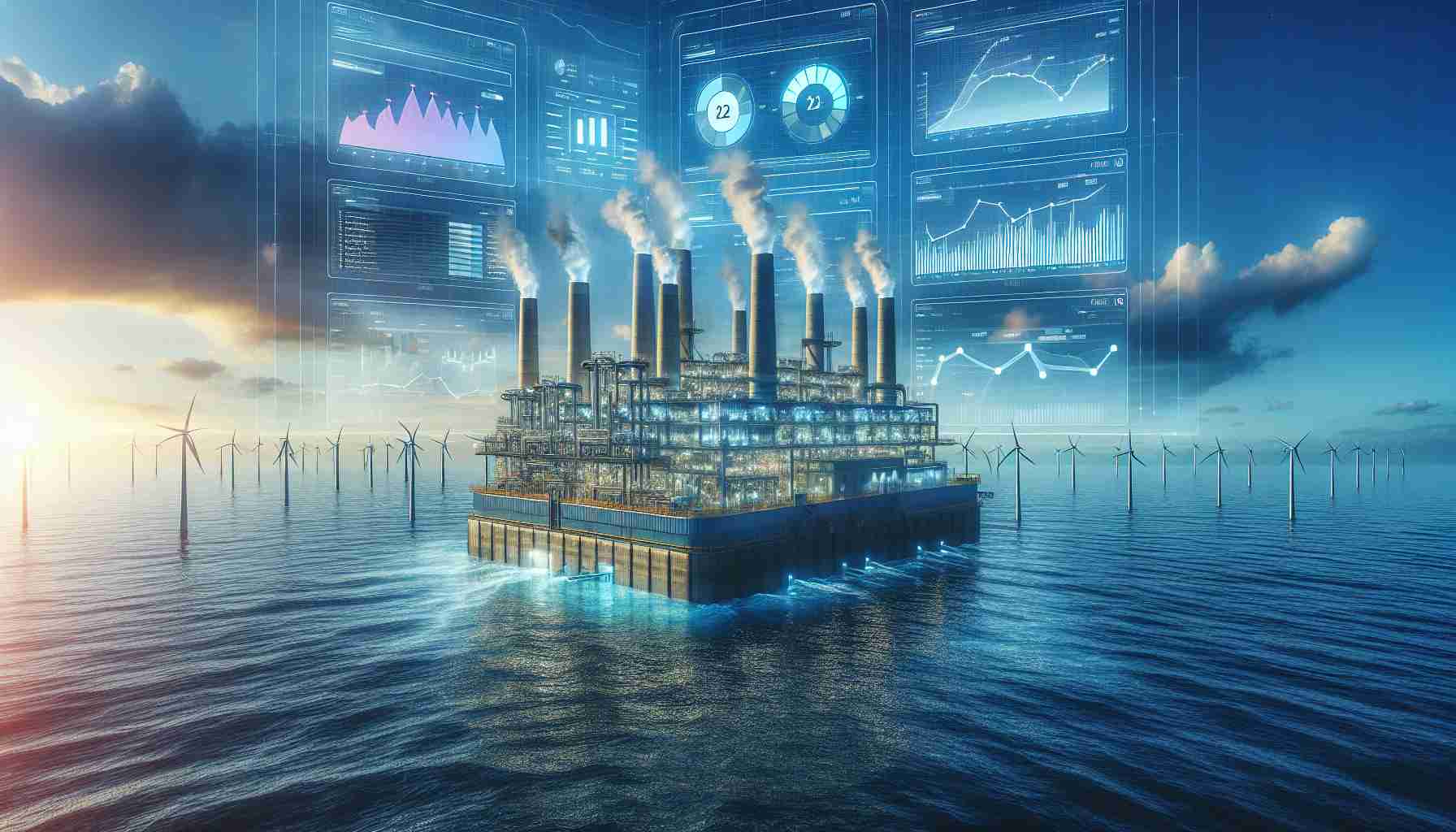Revolutionizing the Future of Nuclear Energy
The Akademik Lomonosov, recognized as the world’s sole floating nuclear power plant, has successfully completed its first refueling after five years in operation in the Russian Arctic’s Chukotka region. Since its launch in May 2020, this innovative facility has generated an impressive one billion kilowatt-hours of energy, as confirmed by Rosatom, the state-run nuclear energy corporation.
While nuclear power often sparks debate due to concerns over radioactive waste and the substantial investments required for traditional plants, the Akademik Lomonosov stands as an engineering marvel. As the northernmost energy-producing unit globally, it serves not just as a power generator but also as a cogeneration facility, capturing waste heat for additional thermal energy.
The floating plant, measuring 472 feet long and 98 feet wide, houses two KLT-40S reactors, initially developed for naval applications. In civilian use, these reactors boast a combined thermal output of 300 MW, with the capability to provide over 60% of the energy needs for the Chaun-Bilibino grid, significantly supporting local mining operations and accommodation for around 5,000 residents.
Rosatom is exploring the construction of four additional floating nuclear plants, showcasing the potential for further expansion and innovation in this unique energy sector. With ongoing advancements, the Akademik Lomonosov highlights a new era of nuclear energy solutions.
Beyond the Waves: The Broader Impact of Floating Nuclear Energy
The successful operation of the Akademik Lomonosov signals a potentially transformative shift in our approach to nuclear energy. This floating nuclear power plant’s innovation goes beyond mere energy generation; it represents a strategic pivot in how isolated communities can access stable, reliable power, particularly in remote regions. As global society grapples with a growing energy demand amidst the climate crisis, floating nuclear plants could provide a viable alternative, especially where conventional infrastructure is unfeasible.
Culturally, the presence of such technology alters perceptions of nuclear energy. Traditionally viewed with skepticism, advancements like the Akademik Lomonosov foster discussions about safety and sustainability, emphasizing the role of nuclear energy in a diversified energy mix. As nations strive for energy independence, particularly in volatile regions, floating plants could become instrumental in shaping local economies and enhancing energy security.
The environmental implications are profound. While nuclear power is known for its low greenhouse gas emissions during operation, the challenge of waste disposal remains. However, innovations in floating nuclear technology may possess the flexibility to implement better waste management practices. As other countries consider adopting similar systems, the potential reduction in fossil fuel dependence could significantly decrease global carbon footprints.
Looking forward, the trend towards modular, scalable energy solutions is likely to accelerate. Floating nuclear plants could evolve into key players in the global energy landscape, paving the way for sustainable development and technological advancement in less accessible areas. This paradigm shift could ultimately redefine energy distribution, community resilience, and environmental stewardship.
Floating Nuclear Power: A Game Changer for the Future of Energy
Revolutionizing the Future of Nuclear Energy
The Akademik Lomonosov, the world’s first floating nuclear power plant, recently marked a significant milestone by successfully completing its first refueling after five years of operation in the Chukotka region of the Russian Arctic. This technological breakthrough by Rosatom, Russia’s state-run nuclear corporation, underscores the innovative approaches being adopted in the nuclear energy sector.
# Key Features of the Akademik Lomonosov
1. Design and Dimensions:
– The floating plant spans 472 feet in length and 98 feet in width, making it a sizeable yet versatile facility designed for challenging environments.
2. Reactor Technology:
– Equipped with two KLT-40S reactors, the plant utilizes technology initially developed for naval vessels. This adaptation showcases the reactor’s versatility and efficiency, producing a combined thermal output of 300 MW.
3. Energy Contribution:
– The Akademik Lomonosov can provide over 60% of the energy needed for the Chaun-Bilibino grid, which is crucial for local mining operations and residential needs, serving approximately 5,000 inhabitants.
4. Cogenaration Capabilities:
– Beyond electricity generation, the facility also captures waste heat, transforming it into additional thermal energy, thus optimizing resource utilization and enhancing overall efficiency.
# Pros and Cons of Floating Nuclear Plants
Pros:
– Reduced Land Footprint: Floating nuclear plants minimize the environmental footprint typically associated with land-based facilities.
– Adaptability: These plants can be deployed in remote areas, providing vital energy resources where traditional infrastructure is lacking.
– Safety: Being offshore or floating reduces risks associated with land-based disasters, such as earthquakes or tsunamis.
Cons:
– Regulatory Challenges: Navigating international regulations can be complex due to the unique nature of floating nuclear facilities.
– Operational Risks: While designed for safety, the novel technology can present unforeseen operational challenges.
– Public Perception: There may be lingering public concerns about the safety and environmental impact of floating nuclear reactors.
# Future Trends and Innovations
Rosatom is planning to build four additional floating nuclear power plants, signaling a potential shift in how nuclear energy is leveraged globally. This expansion aims to meet rising energy demands in remote locations while fostering sustainable energy solutions.
# Market Analysis
The market for floating nuclear plants is gaining traction, driven by increasing energy needs in isolated regions and the global push for cleaner energy sources. The versatility and innovative design of the Akademik Lomonosov position it as a leader in this emerging sector, with the potential to set industry standards.
# Security and Sustainability Aspects
Security measures surrounding nuclear facilities are paramount, and floating nuclear plants may adopt enhanced protocols to safeguard against both natural and man-made threats. Moreover, the sustainability of using floating nuclear technology could pave the way for a greener energy future, as these plants can efficiently supply power while minimizing reliance on fossil fuels.
For further insights into the advancements and potential of nuclear energy, visit [Rosatom](https://www.rosatom.ru).
The source of the article is from the blog shakirabrasil.info



